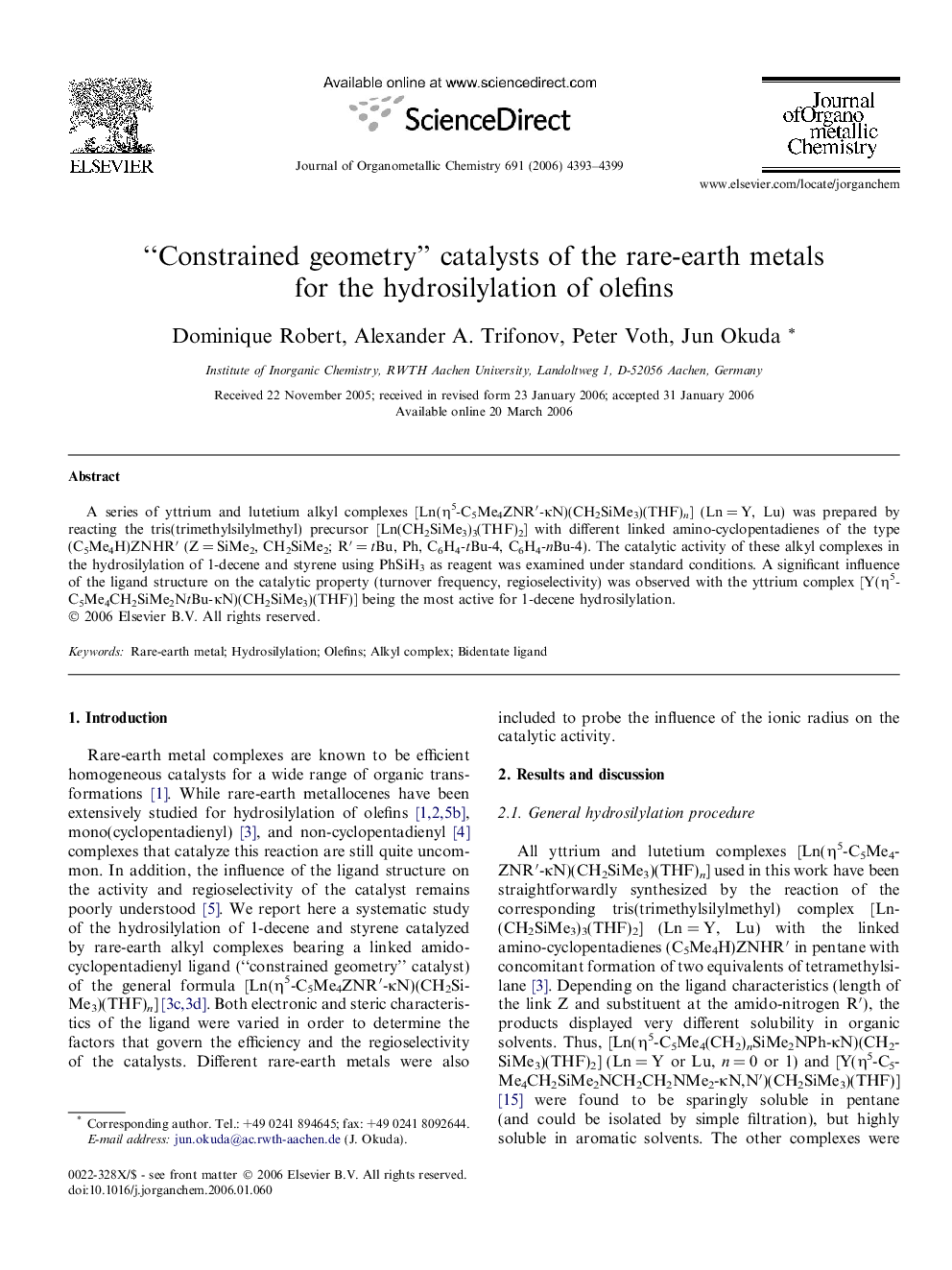| Article ID | Journal | Published Year | Pages | File Type |
|---|---|---|---|---|
| 1325595 | Journal of Organometallic Chemistry | 2006 | 7 Pages |
A series of yttrium and lutetium alkyl complexes [Ln(η5-C5Me4ZNR′-κN)(CH2SiMe3)(THF)n] (Ln = Y, Lu) was prepared by reacting the tris(trimethylsilylmethyl) precursor [Ln(CH2SiMe3)3(THF)2] with different linked amino-cyclopentadienes of the type (C5Me4H)ZNHR′ (Z = SiMe2, CH2SiMe2; R′ = tBu, Ph, C6H4-tBu-4, C6H4-nBu-4). The catalytic activity of these alkyl complexes in the hydrosilylation of 1-decene and styrene using PhSiH3 as reagent was examined under standard conditions. A significant influence of the ligand structure on the catalytic property (turnover frequency, regioselectivity) was observed with the yttrium complex [Y(η5-C5Me4CH2SiMe2NtBu-κN)(CH2SiMe3)(THF)] being the most active for 1-decene hydrosilylation.
Graphical abstractA series of rare-earth metal alkyl complexes [Ln(η5-C5Me4ZNR′-κN)(CH2SiMe3)(THF)n] (Ln = Y, Lu; Z = SiMe2, CH2SiMe2; R′ = tBu, Ph, C6H4-tBu-4, C6H4-nBu-4) was examined for catalytic activity in the hydrosilylation of 1-decene and styrene under standard conditions using PhSiH3. A significant influence of the ligand structure on the catalytic property (turnover frequency, regioselectivity) was observed.Figure optionsDownload full-size imageDownload as PowerPoint slide
